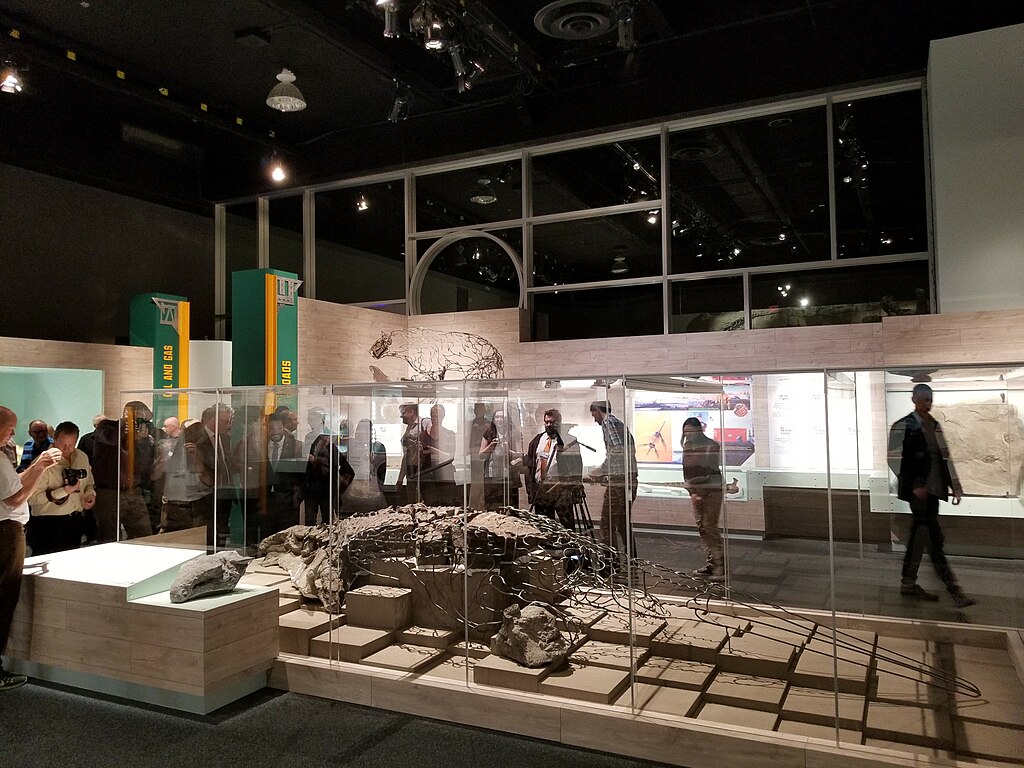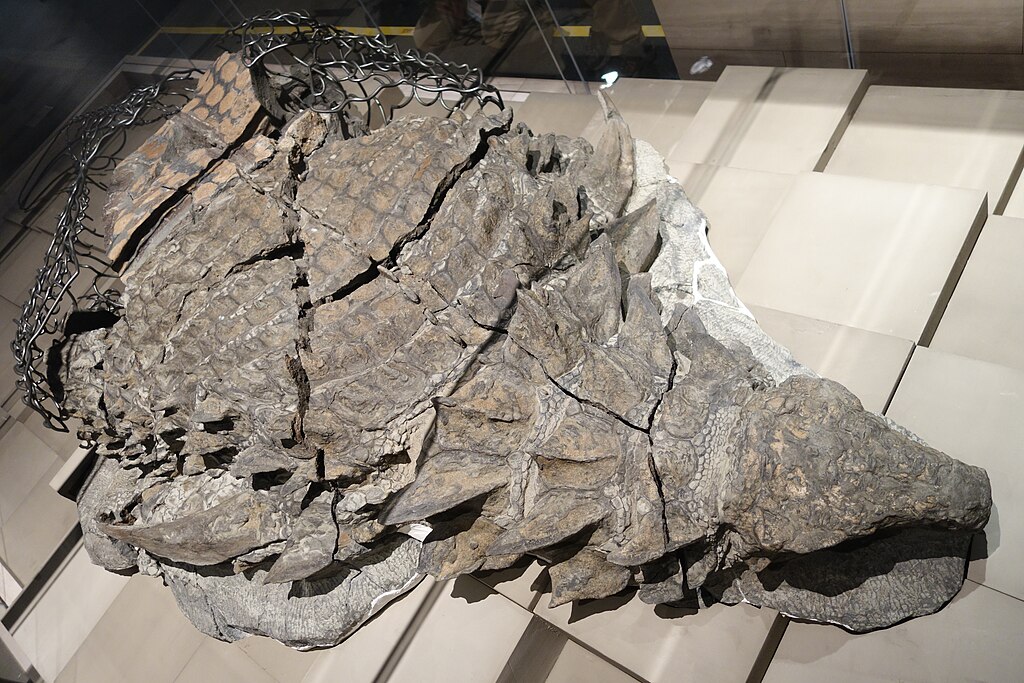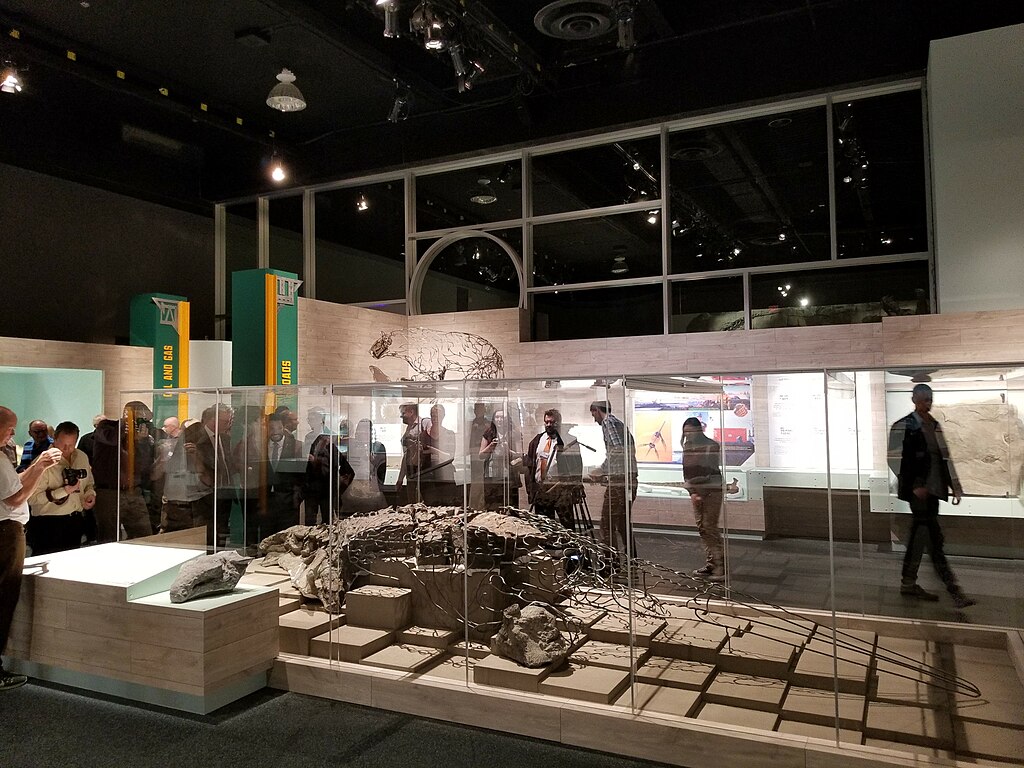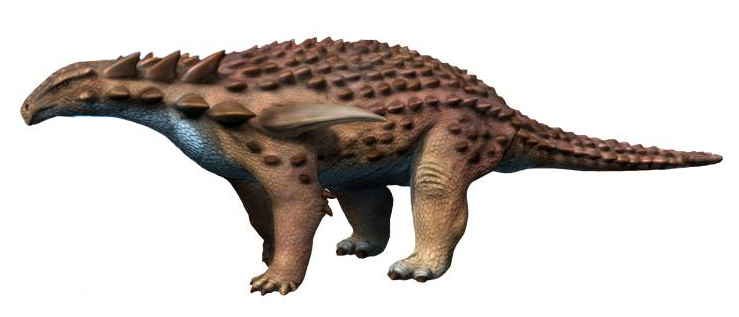Your cart is currently empty!
Ancient Dinosaur Discovery in Canada Reveals How Nature Preserves Life Through Time

Every once in a while, nature reveals a story it has been keeping for millions of years. These stories do not come in words but in silence, waiting for someone curious enough to listen. Beneath the surface of our planet lies more than soil and stone. There are traces of entire worlds that came before ours, sealed away by time, waiting for a chance to be seen again.

Somewhere in the remote stretches of northern Canada, that chance arrived. What began as a routine day for miners soon turned into one of the most extraordinary scientific discoveries of our time. Hidden beneath layers of rock was a creature whose body had defied decay, preserved with such detail that it offered a rare glimpse into a forgotten age. Scientists would later call it a once-in-a-lifetime find, but for those who first uncovered it, it felt like touching history itself.
An Ordinary Day That Changed Earth’s Story
On a cold March afternoon in 2011, the quiet rhythm of work at the Millennium Mine in northern Alberta was interrupted by something no one expected. Shawn Funk, a heavy-equipment operator with more than a decade of experience, was carving through the bitumen-rich sands that feed Canada’s oil industry when his excavator struck something solid. At first glance, it looked like rock, but the color and texture were different. Beneath the layers of sand lay a story that had been buried for more than 110 million years.
What Funk had uncovered would soon draw scientists from around the world. Experts from the Royal Tyrrell Museum identified the discovery as the remains of a nodosaur, a heavily armored plant-eater that once roamed the lush coastal plains of what is now Alberta. Its preservation was unlike anything paleontologists had seen before. The fossil retained not only its skeleton but also its armor, skin texture, and even traces of pigment. Caleb Brown, a researcher at the museum, described the specimen as a dinosaur “as it would have been,” capturing the sense of wonder that surrounded its revelation.

Researchers believe the creature’s journey to immortality began in tragedy. The nodosaur may have been swept into a river during a flood and carried out to sea. As it sank, mineral-rich mud settled around its body, protecting it from decay. Over time, that sediment hardened, encasing the dinosaur in a natural mold that preserved its form with astonishing precision. Now displayed at the Royal Tyrrell Museum, the fossil stands not just as a scientific triumph, but as a quiet reminder that the most extraordinary discoveries often emerge from the most routine moments.
Nature’s Hidden Precision
Every so often, science uncovers evidence that nature can be as meticulous as any artist. The discovery of Borealopelta markmitchelli offered such proof, revealing a fossil so complete that it seemed to capture life mid-movement. Encased for more than 110 million years, this armored dinosaur emerged not as a collection of bones but as a full-bodied reminder of what once thrived on Earth. Its armor, skin, and body contours remain preserved in three dimensions, giving scientists an opportunity to study more than structure. They can see texture, color, and design that once helped the creature survive.
What makes this specimen extraordinary is its level of realism. Unlike many fossils compressed over time, this nodosaur retained its volume and shape, preserving its armor and the soft tissues that surrounded it. Researchers identified microscopic pigment traces within the fossilized skin, suggesting a reddish brown coloration that may have served as camouflage. Paleobiologist Jakob Vinther of the University of Bristol remarked that the specimen was so lifelike it “might have been walking around a couple of weeks ago.” His reaction reflects the rare privilege of witnessing a prehistoric animal appear as though it had only just stopped moving.

Scientists have found that the secret behind such preservation lies in the perfect combination of natural factors. The nodosaur’s body was rapidly buried in mineral-rich marine sediment, cutting off oxygen and halting decay. Over millions of years, those minerals replaced organic material, locking in the fine details of skin, armor, and pigment. Through this remarkable process, Borealopelta became both a scientific treasure and a testament to nature’s ability to record its own history. The fossil reminds us that survival is not only about endurance but also about the environments that protect and remember.
The Human Connection to Deep Time
Scientific discoveries often begin with curiosity, but they leave behind something more profound than data. The unearthing of Borealopelta markmitchelli did not only expand knowledge of ancient life; it bridged a gap between people and the deep history of the planet they inhabit. Standing before the fossil in the Royal Tyrrell Museum, visitors are struck by a quiet sense of perspective. The armored plates, once a defense mechanism, now serve as a tangible reminder that life has always adapted, endured, and changed with the Earth itself.
For the scientists and technicians who dedicated years to uncovering this creature, the experience became a personal journey. Mark Mitchell, the museum preparator who spent over 7,000 hours meticulously revealing the fossil from stone, described the process as both a test of patience and a privilege. His work transformed a mass of rock into a record of existence, one that continues to inspire awe across generations. These efforts remind us that science is not just about discovery; it is about connection. It allows humanity to see its place in a continuum that stretches far beyond written history.

In an era defined by rapid change, this fossil offers a counterpoint to modern urgency. It reminds us that the Earth moves at its own rhythm and that understanding it requires patience and respect. Through Borealopelta, we glimpse both the fragility and the endurance of life, and in doing so, we are reminded that every moment we live becomes part of a much larger story.
Rewriting What We Know About Dinosaur Behavior
Each fossil discovery changes the way scientists understand how dinosaurs lived, interacted, and adapted to their surroundings. The discovery of Borealopelta markmitchelli offered researchers something rare: the chance to study not only the physical appearance of a dinosaur but also evidence of its behavior and environment. This armored herbivore was found with its stomach contents intact, providing direct proof of what it ate and how it might have chosen its food. Such findings move paleontology beyond speculation and into the realm of observation, where scientists can reconstruct not just anatomy, but lifestyle.

The preserved stomach revealed fragments of ferns, stems, and bits of charcoal, suggesting that the dinosaur lived in an area that had recently experienced wildfire. According to curator Caleb Brown of the Royal Tyrrell Museum, Borealopelta appeared to prefer tender fern leaves over tougher vegetation, showing that even massive plant-eaters could be selective in their diets. This insight has shifted the perception of herbivorous dinosaurs from simple grazers to strategic foragers that responded to seasonal changes and landscape conditions.
These details allow scientists to better understand how dinosaurs interacted with their ecosystems. The presence of charcoal indicates that fires were part of the natural cycle of regeneration, with ferns flourishing afterward and providing fresh growth for large herbivores. This connection between destruction and renewal mirrors the resilience of modern ecosystems that rely on fire to sustain biodiversity. In this way, Borealopelta continues to teach not only about prehistoric life but also about the enduring patterns that shape the natural world today.
When the Past Teaches the Living
The story of Borealopelta markmitchelli is more than a chapter in paleontology; it is a reminder of the Earth’s quiet intelligence. Preserved for more than 110 million years, this armored dinosaur survived time not through strength but through circumstance and balance. Its discovery allowed scientists to see that preservation is as much a product of harmony as it is of chance. The mud, minerals, and stillness that held its form became the very forces that protected it, teaching us that nature safeguards what it values through connection, not resistance.
For modern readers, this lesson extends beyond science. It asks us to look at how we live within our own environments and how easily the stories of our time could vanish if we fail to preserve them. The same patience and precision that revealed Borealopelta are the qualities that sustain ecosystems, relationships, and knowledge today.

As researchers continue to study this remarkable fossil, they are not only uncovering ancient details but also affirming something timeless. Every trace of life leaves meaning behind. The nodosaur’s stillness speaks of endurance, its armor of adaptation, and its rediscovery of hope. In its silence, the Earth continues to whisper the same message it has carried for eons: what we choose to protect is what will tell our story long after we are gone.
Featured Image from Kellyhofer, CC BY-SA 4.0, via Wikimedia Commons
